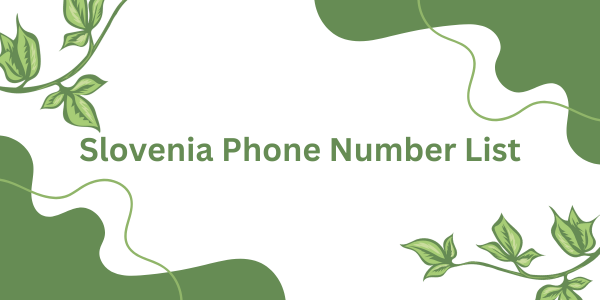|
|
Slovenia generates electricity through a diverse mix of energy sources, focusing on renewable energy, nuclear power, and hydroelectricity, while also utilizing fossil fuels to meet its energy demands. The country emphasizes a shift toward Slovenia Phone Number List sustainable and clean energy sources to support its climate goals and reduce carbon emissions.
1. Hydroelectric Power:
Hydroelectricity is the largest source of electricity in Slovenia, accounting for approximately 40% to 50% of the country’s total electricity production. Slovenia has numerous rivers and mountainous terrain that support hydroelectric power plants. Major hydroelectric plants, such as the Savske power station, exploit the country's river systems effectively. Hydropower is a clean and renewable source of energy that plays a vital role in Slovenia's efforts to maintain energy security while minimizing environmental impacts.
2. Nuclear Power:
Slovenia generates about 30% to 35% of its electricity from nuclear energy, with the Krško Nuclear Power Plant being the main facility. This single nuclear plant is located in the town of Krško and has been operational since 1983. It has a capacity of 688 megawatts and is a joint venture between Slovenia and Croatia, with both nations sharing its operation costs and benefits. Nuclear power provides a steady, low-carbon source of electricity, ensuring that the country can meet demand without excessive reliance on fossil fuels.

3. Renewable Energy Sources:
Slovenia is transitioning toward renewable energy to reduce reliance on non-renewable sources and meet European Union renewable energy goals. The country uses wind power, solar power, and biomass as part of its renewable energy strategy. Wind farms and solar panels are becoming increasingly common, particularly in rural and mountainous areas. The government has implemented policies and incentives to promote the development of renewable energy projects and diversify the energy mix.
4. Fossil Fuels:
While Slovenia is shifting toward cleaner energy, it still relies on coal and natural gas for electricity generation. Fossil fuels contribute a smaller share of electricity but are used during times of high demand or as backup sources. Efforts are ongoing to reduce their use in line with international climate change goals.
5. Imports:
Slovenia imports electricity from neighboring European countries to balance supply during peak demand periods or when domestic production is insufficient. Its strategic location within Europe facilitates energy trade, ensuring grid stability and supply reliability.
In conclusion, Slovenia uses a mix of hydropower, nuclear energy, renewable sources, and fossil fuels to generate electricity. With a strong focus on renewable energy and sustainability, Slovenia is working toward a greener energy future while maintaining reliable and affordable electricity for its population.
|
|